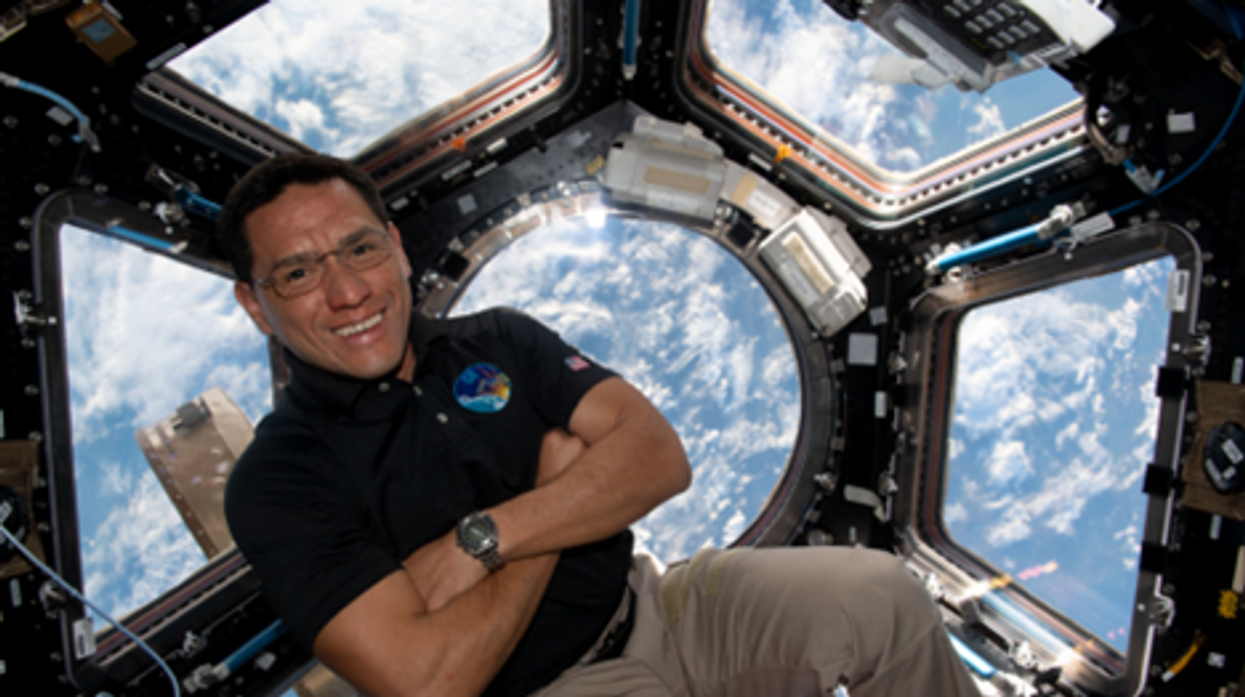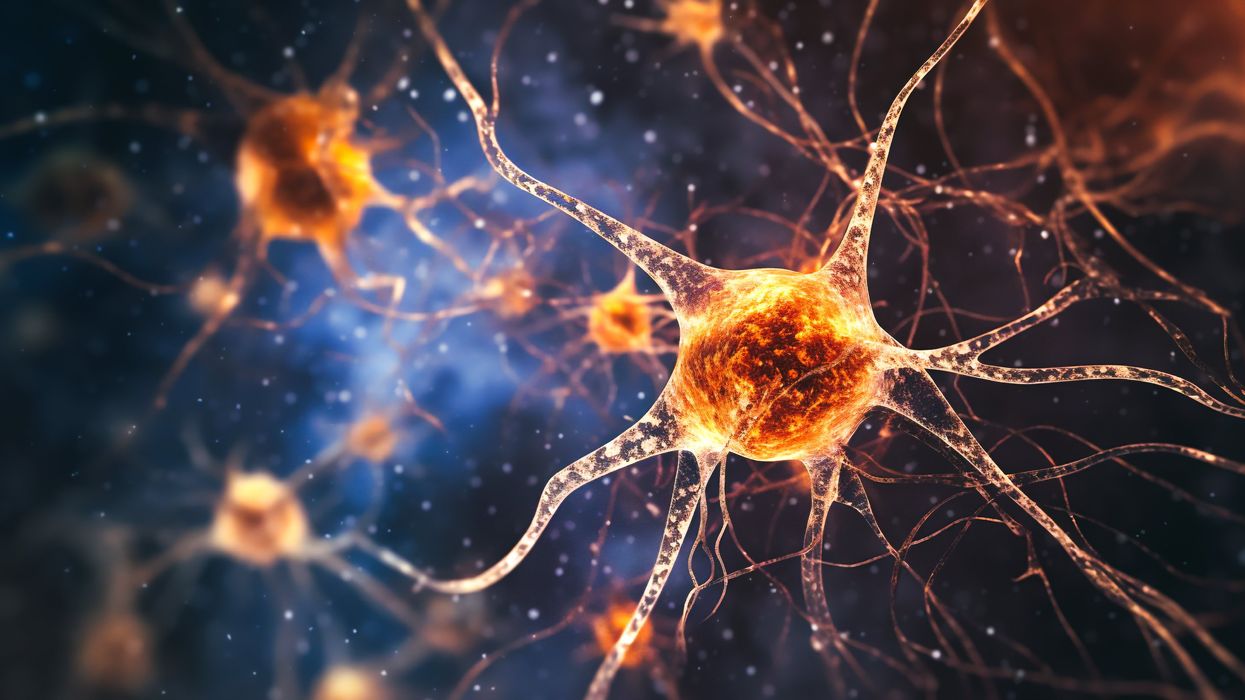Forcing Vaccination on Every Child Undermines Civil Liberties
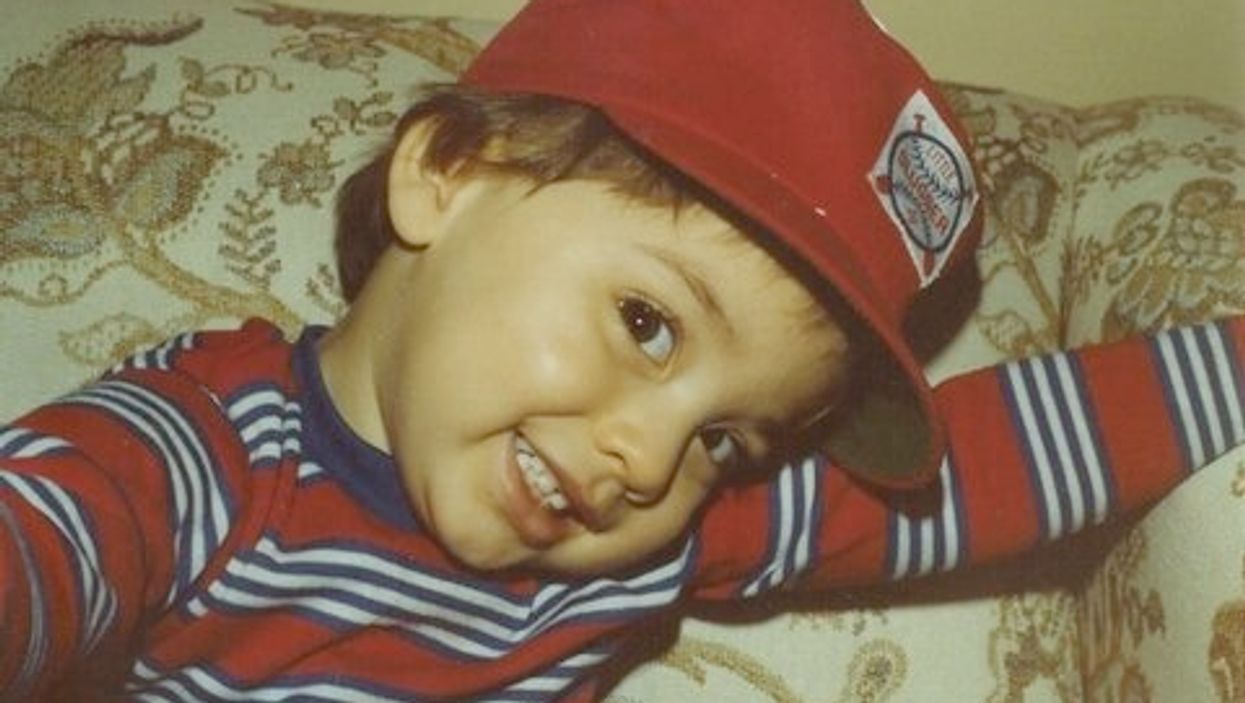
The author's son Chris, at two years old in the summer of 1980, before his 4th DPT shot.
[Editor's Note: This opinion essay is in response to our current Big Question, which we posed to experts with different viewpoints: "Where should society draw the line between requiring vaccinations for children and allowing parental freedom of choice?"]
Our children are the future. The survival of humanity is advanced by the biological imperative that mothers and fathers want and need to protect their children and other children from being harmed for any reason.
Science is not perfect, doctors are not infallible, and medical interventions come with risks.
In the 21st century, consensus science considers vaccination to be one of the greatest inventions in the history of medicine and the greatest achievement of public health programs. The national vaccination rate for U.S. kindergarten children is 94 percent and most children today receive 69 doses of 16 federally recommended vaccines. However, public health is not simply measured by high vaccination rates and absence of infectious disease, which is evidenced by the chronic inflammatory disease and disability epidemic threatening to bankrupt the U.S. health care system.
Science is not perfect, doctors are not infallible, and medical interventions come with risks, which is why parents have the power to exercise informed consent to medical risk taking on behalf of their minor children.
As a young mother, I learned that vaccine risks are 100 percent for some children because, while we are all born equal under the law, we are not born all the same. Each one of us enters this world with different genes, a unique microbiome and epigenetic influences that affect how we respond to the environments in which we live. We do not all respond the same way to infectious diseases or to pharmaceutical products like vaccines.
Few parents were aware of vaccine side effects in 1980, when my bright, healthy two-and-a-half year-old son, Chris, suffered a convulsion, collapse, and state of unconsciousness (encephalopathy) within hours of his fourth DPT shot, and then regressed physically, mentally and emotionally and became a totally different child. Chris was eventually diagnosed with multiple learning disabilities and confined to a special education classroom throughout his public school education, but he and I both know his vaccine reaction could have been much worse. Today, Chris is an independent adult but many survivors of brain injury are not.

Barbara Loe Fisher and her son, Chris, in December 1981 after his fourth DPT shot.
(Courtesy Fisher)
The public conversation about several hundred cases of measles reported in the U.S. this year is focused on whether every parent has a social obligation to vaccinate every child to maintain "community immunity," but vaccine failures are rarely discussed. Emerging science reveals that there are differences in naturally and vaccine acquired immunity, and both vaccinated and unvaccinated children and adults transmit infections, sometimes with few or no symptoms.
Nearly 40 percent of cases reported in the 2015 U.S. measles outbreak occurred in recently vaccinated individuals who developed vaccine reactions that appeared indistinguishable from measles. Outbreaks of pertussis (whooping cough) in highly vaccinated child populations have been traced to waning immunity and evolution of the B. pertussis microbe to evade the vaccines. Influenza vaccine effectiveness was less than 50 percent in 11 of the past 15 flu seasons.
Vaccine policymakers recognize that children with severe combined immune deficiency or those undergoing chemotherapy or organ transplants are at increased risk for complications of infectious diseases and vaccines. However, there is no recognition of the risks to healthy infants and children with unidentified susceptibility to vaccine reactions, including children whose health suddenly deteriorates without explanation after vaccination. Medical care is being denied to children and adults in the U.S. if even one government recommended vaccination is declined, regardless of health or vaccine reaction history.
When parents question the risks and failures of a commercial pharmaceutical product being mandated for every child, the answer is not more force but better science and respect for the informed consent ethic.
The social contract we have with each other when we live in communities, whether we belong to the majority or a minority, is to care about and protect every individual living in the community. One-size-fits-all vaccine policies and laws, which fail to respect biodiversity and force everyone to be treated the same, place an unequal risk burden on a minority of unidentified individuals unable to survive vaccination without being harmed.
A law that requires certain minorities to bear a greater risk of injury or sacrifice their lives in service to the majority is not just or moral.
Between 1991 and 2013, the Institute of Medicine (IOM) published reports documenting that vaccines can cause brain inflammation and other serious reactions, injuries and death. A 2012 IOM report acknowledged that there are genetic, biological, and environmental risk factors that make some individuals more susceptible to adverse responses to vaccines but often doctors cannot identify who they are because of gaps in vaccine science. Congress acknowledged this fact a quarter century earlier in the 1986 National Childhood Vaccine Injury Act, which created a federal vaccine injury compensation program alternative to a lawsuit that has awarded more than $4 billion to vaccine-injured children and adults.
We give up the human right to autonomy and informed consent at our peril, no matter where or in what century we live.
Vaccine manufacturers and administrators have liability protection, yet today almost no health condition qualifies for a medical vaccine exemption under government guidelines. Now, there is a global call by consensus science advocates for elimination of all personal belief vaccine exemptions and censorship of books and public conversations that criticize vaccine safety or government vaccine policy. Some are calling for quarantine of all who refuse vaccinations and criminal prosecution, fines and imprisonment of parents with unvaccinated children, as well as punishment of doctors who depart from government policy.
There is no civil liberty more fundamentally a natural, inalienable right than exercising freedom of thought and conscience when deciding when and for what reason we are willing to risk our life or our child's life. That is why voluntary, informed consent to medical risk-taking has been defined as a human right governing the ethical practice of modern medicine.
In his first Presidential inaugural address, Thomas Jefferson warned:
"All, too, will bear in mind this sacred principle, that though the will of the majority is in all cases to prevail, that will to be rightful must be reasonable; that the minority posses their equal rights, which equal law must protect, and to violate would be oppression."
The seminal 1905 U.S. Supreme Court decision, Jacobson v. Massachusetts, affirmed the constitutional authority of states to enact mandatory smallpox vaccination laws. However, the justices made it clear that implementation of a vaccination law should not become "cruel and inhuman to the last degree." They warned, "All laws, this court has said, should receive a sensible construction. General terms should be so limited in their application as not to lead to injustice, oppression, or an absurd consequence. It will always, therefore, be presumed that the legislature intended exceptions to its language, which would avoid results of this character."
Mothers and fathers, who know and love their children better than anyone else, depend upon sound science and compassionate public health policies to help them protect their own and other children from harm. If individuals susceptible to vaccine injury cannot be reliably identified, the accuracy of vaccine benefit and risk calculations must be reexamined. Yet, consensus science and medicine around vaccination discourages research into the biological mechanisms of vaccine injury and death and identification of individual risk factors to better inform public health policy.
A critic of consensus science, physician and author Michael Crichton said, "Let's be clear: the work of science has nothing whatever to do with consensus. Consensus is the business of politics. Period."
Condoning elimination of civil liberties, including freedom of speech and the right to dissent guaranteed under the First Amendment of the U.S. Constitution, to enforce vaccination creates a slippery slope. Coercion, punishment and censorship will destroy, not instill, public trust in the integrity of medical practice and public health laws.
There are more than a dozen new vaccines being fast tracked to market by industry and governments. Who in society should be given the power to force all children to use every one of them without parental consent regardless of how small or great the risk?
We give up the human right to autonomy and informed consent at our peril, no matter where or in what century we live. Just and compassionate public health laws that protect parental and human rights will include flexible medical, religious and conscientious belief vaccine exemptions to affirm the informed consent ethic and prevent discrimination against vulnerable minorities.
[Editor's Note: Read the opposite viewpoint here.]
After spaceflight record, NASA looks to protect astronauts on even longer trips
NASA astronaut Frank Rubio floats by the International Space Station’s “window to the world.” Yesterday, he returned from the longest single spaceflight by a U.S. astronaut on record - over one year. Exploring deep space will require even longer missions.
At T-minus six seconds, the main engines of the Atlantis Space Shuttle ignited, rattling its capsule “like a skyscraper in an earthquake,” according to astronaut Tom Jones, describing the 1988 launch. As the rocket lifted off and accelerated to three times the force of Earth's gravity, “It felt as if two of my friends were standing on my chest and wouldn’t get off.” But when Atlantis reached orbit, the main engines cut off, and the astronauts were suddenly weightless.
Since 1961, NASA has sent hundreds of astronauts into space while working to making their voyages safer and smoother. Yet, challenges remain. Weightlessness may look amusing when watched from Earth, but it has myriad effects on cognition, movement and other functions. When missions to space stretch to six months or longer, microgravity can impact astronauts’ health and performance, making it more difficult to operate their spacecraft.
Yesterday, NASA astronaut Frank Rubio returned to Earth after over one year, the longest single spaceflight for a U.S. astronaut. But this is just the start; longer and more complex missions into deep space loom ahead, from returning to the moon in 2025 to eventually sending humans to Mars. To ensure that these missions succeed, NASA is increasing efforts to study the biological effects and prevent harm.
The dangers of microgravity are real
A NASA report published in 2016 details a long list of incidents and near-misses caused – at least partly – by space-induced changes in astronauts’ vision and coordination. These issues make it harder to move with precision and to judge distance and velocity.
According to the report, in 1997, a resupply ship collided with the Mir space station, possibly because a crew member bumped into the commander during the final docking maneuver. This mishap caused significant damage to the space station.
Returns to Earth suffered from problems, too. The same report notes that touchdown speeds during the first 100 space shuttle landings were “outside acceptable limits. The fastest landing on record – 224 knots (258 miles) per hour – was linked to the commander’s momentary spatial disorientation.” Earlier, each of the six Apollo crews that landed on the moon had difficulty recognizing moon landmarks and estimating distances. For example, Apollo 15 landed in an unplanned area, ultimately straddling the rim of a five-foot deep crater on the moon, harming one of its engines.
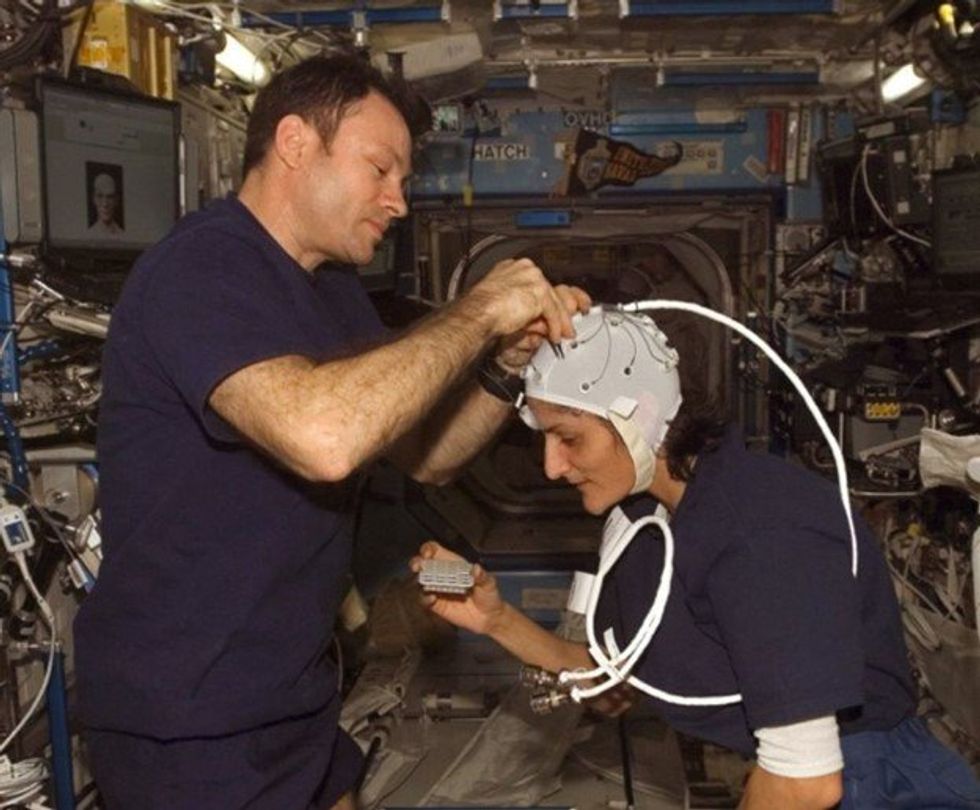
Spaceflight causes unique stresses on astronauts’ brains and central nervous systems. NASA is working to reduce these harmful effects.
NASA
Space messes up your brain
In space, astronauts face the challenges of microgravity, ionizing radiation, social isolation, high workloads, altered circadian rhythms, monotony, confined living quarters and a high-risk environment. Among these issues, microgravity is one of the most consequential in terms of physiological changes. It changes the brain’s structure and its functioning, which can hurt astronauts’ performance.
The brain shifts upwards within the skull, displacing the cerebrospinal fluid, which reduces the brain’s cushioning. Essentially, the brain becomes crowded inside the skull like a pair of too-tight shoes.
That’s partly because of how being in space alters blood flow. On Earth, gravity pulls our blood and other internal fluids toward our feet, but our circulatory valves ensure that the fluids are evenly distributed throughout the body. In space, there’s not enough gravity to pull the fluids down, and they shift up, says Rachael D. Seidler, a physiologist specializing in spaceflight at the University of Florida and principal investigator on many space-related studies. The head swells and legs appear thinner, causing what astronauts call “puffy face chicken legs.”
“The brain changes at the structural and functional level,” says Steven Jillings, equilibrium and aerospace researcher at the University of Antwerp in Belgium. “The brain shifts upwards within the skull,” displacing the cerebrospinal fluid, which reduces the brain’s cushioning. Essentially, the brain becomes crowded inside the skull like a pair of too-tight shoes. Some of the displaced cerebrospinal fluid goes into cavities within the brain, called ventricles, enlarging them. “The remaining fluids pool near the chest and heart,” explains Jillings. After 12 consecutive months in space, one astronaut had a ventricle that was 25 percent larger than before the mission.
Some changes reverse themselves while others persist for a while. An example of a longer-lasting problem is spaceflight-induced neuro-ocular syndrome, which results in near-sightedness and pressure inside the skull. A study of approximately 300 astronauts shows near-sightedness affects about 60 percent of astronauts after long missions on the International Space Station (ISS) and more than 25 percent after spaceflights of only a few weeks.
Another long-term change could be the decreased ability of cerebrospinal fluid to clear waste products from the brain, Seidler says. That’s because compressing the brain also compresses its waste-removing glymphatic pathways, resulting in inflammation, vulnerability to injuries and worsening its overall health.
The effects of long space missions were best demonstrated on astronaut twins Scott and Mark Kelly. This NASA Twins Study showed multiple, perhaps permanent, changes in Scott after his 340-day mission aboard the ISS, compared to Mark, who remained on Earth. The differences included declines in Scott’s speed, accuracy and cognitive abilities that persisted longer than six months after returning to Earth in March 2016.
By the end of 2020, Scott’s cognitive abilities improved, but structural and physiological changes to his eyes still remained, he said in a BBC interview.
“It seems clear that the upward shift of the brain and compression of the surrounding tissues with ventricular expansion might not be a good thing,” Seidler says. “But, at this point, the long-term consequences to brain health and human performance are not really known.”
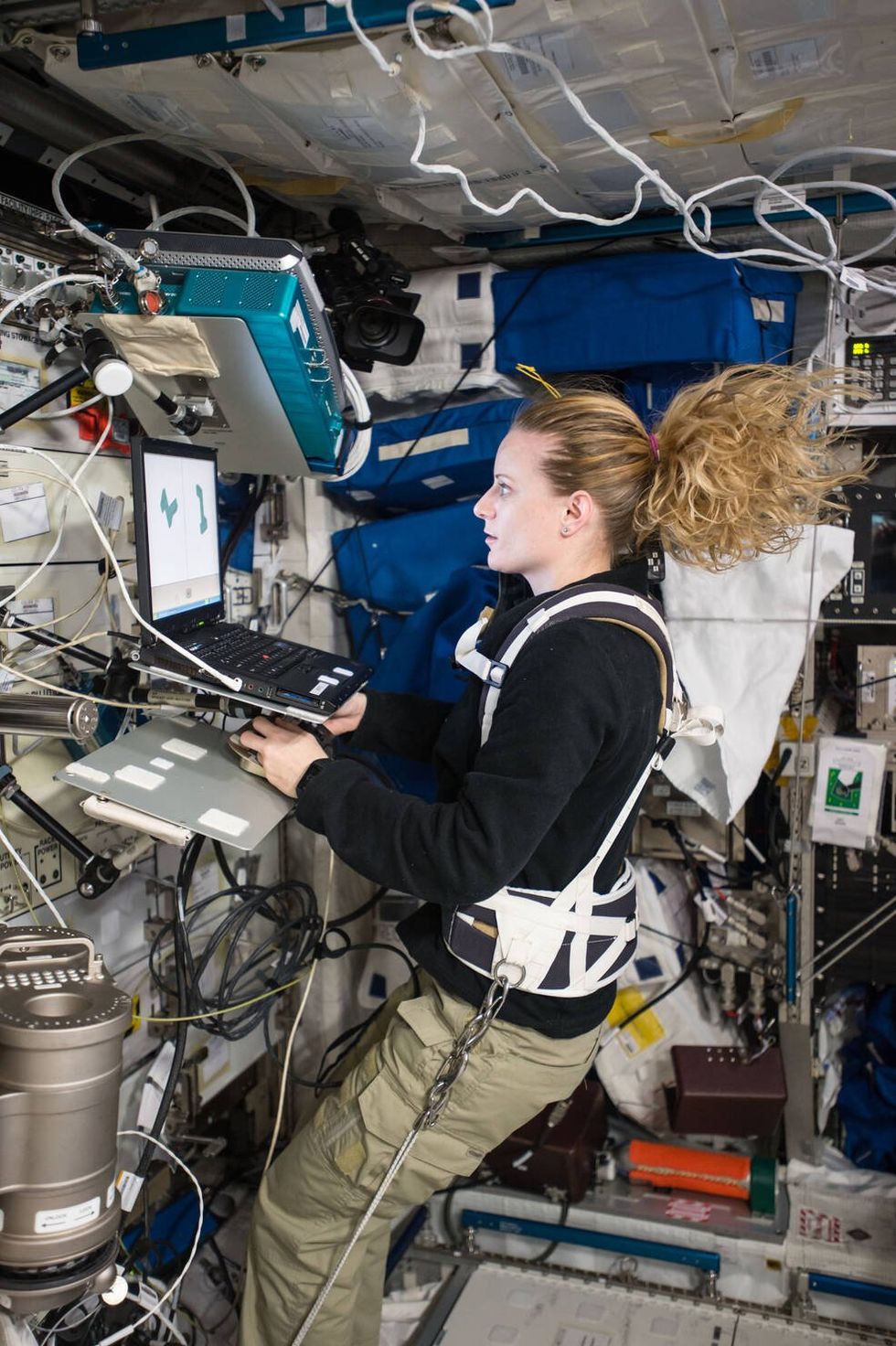
NASA astronaut Kate Rubins conducts a session for the Neuromapping investigation.
NASA
Staying sharp in space
To investigate how prolonged space travel affects the brain, NASA launched a new initiative called the Complement of Integrated Protocols for Human Exploration Research (CIPHER). “CIPHER investigates how long-duration spaceflight affects both brain structure and function,” says neurobehavioral scientist Mathias Basner at the University of Pennsylvania, a principal investigator for several NASA studies. “Through it, we can find out how the brain adapts to the spaceflight environment and how certain brain regions (behave) differently after – relative to before – the mission.”
To do this, he says, “Astronauts will perform NASA’s cognition test battery before, during and after six- to 12-month missions, and will also perform the same test battery in an MRI scanner before and after the mission. We have to make sure we better understand the functional consequences of spaceflight on the human brain before we can send humans safely to the moon and, especially, to Mars.”
As we go deeper into space, astronauts cognitive and physical functions will be even more important. “A trip to Mars will take about one year…and will introduce long communication delays,” Seidler says. “If you are on that mission and have a problem, it may take eight to 10 minutes for your message to reach mission control, and another eight to 10 minutes for the response to get back to you.” In an emergency situation, that may be too late for the response to matter.
“On a mission to Mars, astronauts will be exposed to stressors for unprecedented amounts of time,” Basner says. To counter them, NASA is considering the continuous use of artificial gravity during the journey, and Seidler is studying whether artificial gravity can reduce the harmful effects of microgravity. Some scientists are looking at precision brain stimulation as a way to improve memory and reduce anxiety due to prolonged exposure to radiation in space.
Other scientists are exploring how to protect neural stem cells (which create brain cells) from radiation damage, developing drugs to repair damaged brain cells and protect cells from radiation.
To boldly go where no astronauts have gone before, they must have optimal reflexes, vision and decision-making. In the era of deep space exploration, the brain—without a doubt—is the final frontier.
Additionally, NASA is scrutinizing each aspect of the mission, including astronaut exercise, nutrition and intellectual engagement. “We need to give astronauts meaningful work. We need to stimulate their sensory, cognitive and other systems appropriately,” Basner says, especially given their extreme confinement and isolation. The scientific experiments performed on the ISS – like studying how microgravity affects the ability of tissue to regenerate is a good example.
“We need to keep them engaged socially, too,” he continues. The ISS crew, for example, regularly broadcasts from space and answers prerecorded questions from students on Earth, and can engage with social media in real time. And, despite tight quarters, NASA is ensuring the crew capsule and living quarters on the moon or Mars include private space, which is critical for good mental health.
Exploring deep space builds on a foundation that began when astronauts first left the planet. With each mission, scientists learn more about spaceflight effects on astronauts’ bodies. NASA will be using these lessons to succeed with its plans to build science stations on the moon and, eventually, Mars.
“Through internally and externally led research, investigations implemented in space and in spaceflight simulations on Earth, we are striving to reduce the likelihood and potential impacts of neurostructural changes in future, extended spaceflight,” summarizes NASA scientist Alexandra Whitmire. To boldly go where no astronauts have gone before, they must have optimal reflexes, vision and decision-making. In the era of deep space exploration, the brain—without a doubt—is the final frontier.
A newly discovered brain cell may lead to better treatments for cognitive disorders
Swiss researchers have found a type of brain cell that appears to be a hybrid of the two other main types — and it could lead to new treatments for brain disorders.
Swiss researchers have discovered a third type of brain cell that appears to be a hybrid of the two other primary types — and it could lead to new treatments for many brain disorders.
The challenge: Most of the cells in the brain are either neurons or glial cells. While neurons use electrical and chemical signals to send messages to one another across small gaps called synapses, glial cells exist to support and protect neurons.
Astrocytes are a type of glial cell found near synapses. This close proximity to the place where brain signals are sent and received has led researchers to suspect that astrocytes might play an active role in the transmission of information inside the brain — a.k.a. “neurotransmission” — but no one has been able to prove the theory.
A new brain cell: Researchers at the Wyss Center for Bio and Neuroengineering and the University of Lausanne believe they’ve definitively proven that some astrocytes do actively participate in neurotransmission, making them a sort of hybrid of neurons and glial cells.
According to the researchers, this third type of brain cell, which they call a “glutamatergic astrocyte,” could offer a way to treat Alzheimer’s, Parkinson’s, and other disorders of the nervous system.
“Its discovery opens up immense research prospects,” said study co-director Andrea Volterra.
The study: Neurotransmission starts with a neuron releasing a chemical called a neurotransmitter, so the first thing the researchers did in their study was look at whether astrocytes can release the main neurotransmitter used by neurons: glutamate.
By analyzing astrocytes taken from the brains of mice, they discovered that certain astrocytes in the brain’s hippocampus did include the “molecular machinery” needed to excrete glutamate. They found evidence of the same machinery when they looked at datasets of human glial cells.
Finally, to demonstrate that these hybrid cells are actually playing a role in brain signaling, the researchers suppressed their ability to secrete glutamate in the brains of mice. This caused the rodents to experience memory problems.
“Our next studies will explore the potential protective role of this type of cell against memory impairment in Alzheimer’s disease, as well as its role in other regions and pathologies than those explored here,” said Andrea Volterra, University of Lausanne.
But why? The researchers aren’t sure why the brain needs glutamatergic astrocytes when it already has neurons, but Volterra suspects the hybrid brain cells may help with the distribution of signals — a single astrocyte can be in contact with thousands of synapses.
“Often, we have neuronal information that needs to spread to larger ensembles, and neurons are not very good for the coordination of this,” researcher Ludovic Telley told New Scientist.
Looking ahead: More research is needed to see how the new brain cell functions in people, but the discovery that it plays a role in memory in mice suggests it might be a worthwhile target for Alzheimer’s disease treatments.
The researchers also found evidence during their study that the cell might play a role in brain circuits linked to seizures and voluntary movements, meaning it’s also a new lead in the hunt for better epilepsy and Parkinson’s treatments.
“Our next studies will explore the potential protective role of this type of cell against memory impairment in Alzheimer’s disease, as well as its role in other regions and pathologies than those explored here,” said Volterra.

This article originally appeared on Freethink, home of the brightest minds and biggest ideas of all time.
